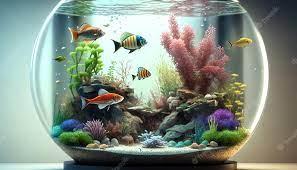The Top Factors to Consider When Selecting Aquarium Substrate

Aquarium substrate is a vital element of any aquarium. It serves as the foundation for beneficial bacteria, provides a natural environment for fish and plants, and enhances the aesthetic appeal of your tank. With so many types of aquarium substrate available, selecting the right one can be overwhelming. In this article, we'll discuss the top factors to consider when selecting aquarium substrate and how to choose the right substrate for your aquarium.
The Needs of Your Fish and Plants
Different fish and plant species have different requirements when it comes to substrate. For example, bottom-dwelling fish may require a substrate like sand that is soft and gentle on their fins, while plants may thrive in soil that provides essential nutrients for growth. Research the needs of your fish and plants to ensure that you select the right substrate for your tank.
The Size of Your Aquarium
The size of your aquarium is another crucial factor to consider when selecting aquarium substrate. A larger aquarium will require more substrate than a smaller one. Aim for a depth of 2-3 inches of substrate in your tank. Adding too much substrate can lead to anaerobic conditions, while adding too little can create uneven areas that trap debris and waste.
Your Budget
The cost of aquarium substrate can vary depending on the type and brand. Some substrates may require additional equipment to maintain, which can add to the overall cost. Determine your budget before selecting a substrate, and factor in any additional costs to ensure that you can afford to maintain it.
The Type of Fish in Your Aquarium
The type of fish in your aquarium is another important factor to consider when selecting substrate. Some fish may be sensitive to certain types of substrate, such as sharp gravel that can harm their fins or delicate sand that can cause digestive problems if ingested. Research the compatibility of your fish with different types of substrate to ensure that you select a substrate that won't harm them.
Aesthetics
The aesthetic appeal of your aquarium is another factor to consider when selecting substrate. Substrate comes in a range of colors and textures, so choose one that complements the aesthetic of your aquarium. Keep in mind that darker substrates can make your aquarium appear smaller, while lighter substrates can make it appear larger.
Ease of Maintenance
Different types of substrate require different levels of maintenance. For example, sand is easy to clean and maintain, while gravel may require more frequent cleaning to prevent debris from accumulating. Consider the level of maintenance required for each type of substrate and choose one that fits your schedule and lifestyle.
How to Choose Aquarium Substrate
Now that you know the top factors to consider when selecting aquarium substrate, it's time to choose the right substrate for your aquarium. Here are some steps to follow:
1. Research the Needs of Your Fish and Plants
Learn about the specific requirements of your fish and plants to ensure that you select the right substrate for them. Consider factors such as their natural habitat, behavior, and diet.
2. Determine the Size of Your Aquarium
Calculate the amount of substrate you need based on the size of your aquarium. Aim for a depth of 2-3 inches of substrate in your tank.
3. Set a Budget
Determine how much you can afford to spend on substrate and factor in any additional costs such as equipment or maintenance.
4. Consider the Type of Fish in Your Aquarium
Research the compatibility of your fish with different types of substrate to ensure that you select a substrate that won't harm them.
5. Choose an Aesthetic
Select a substrate that complements the aesthetic of your aquarium.
6. Consider the Ease of Maintenance
Choose a substrate that fits your lifestyle and schedule in terms of maintenance.
By following these steps and considering the top factors discussed in this article, you'll be able to choose the right aquarium substrate for your fish and plants. Remember to also take into account any personal preferences you may have when it comes to the look and feel of your aquarium.
Maintaining a healthy and thriving aquarium requires careful consideration of all the elements that make up your tank, including the substrate. By selecting the right substrate, you'll be setting the foundation for a successful and beautiful aquarium that you can enjoy for years to come.
Advertise on APSense
This advertising space is available.
Post Your Ad Here
Post Your Ad Here
Comments